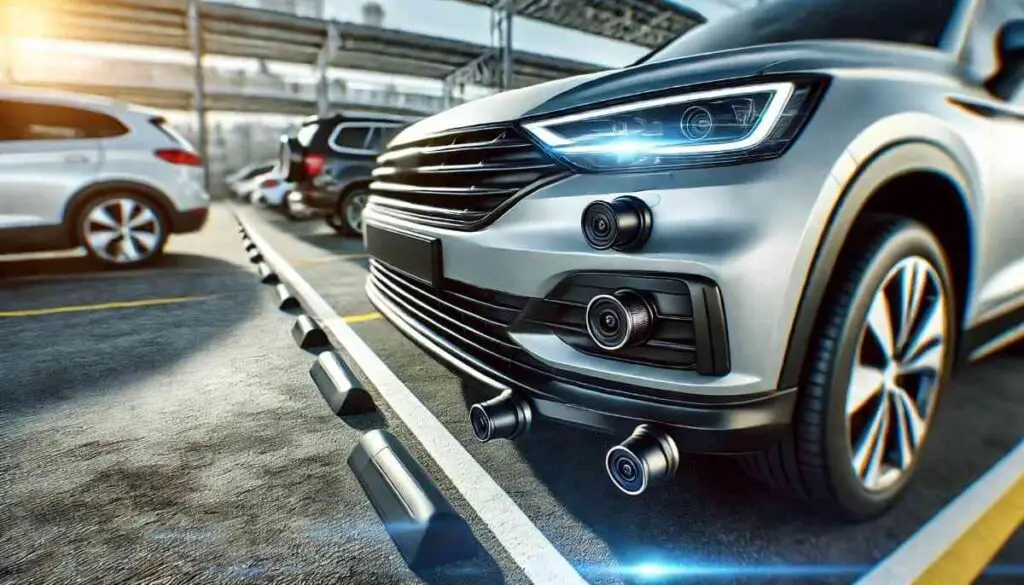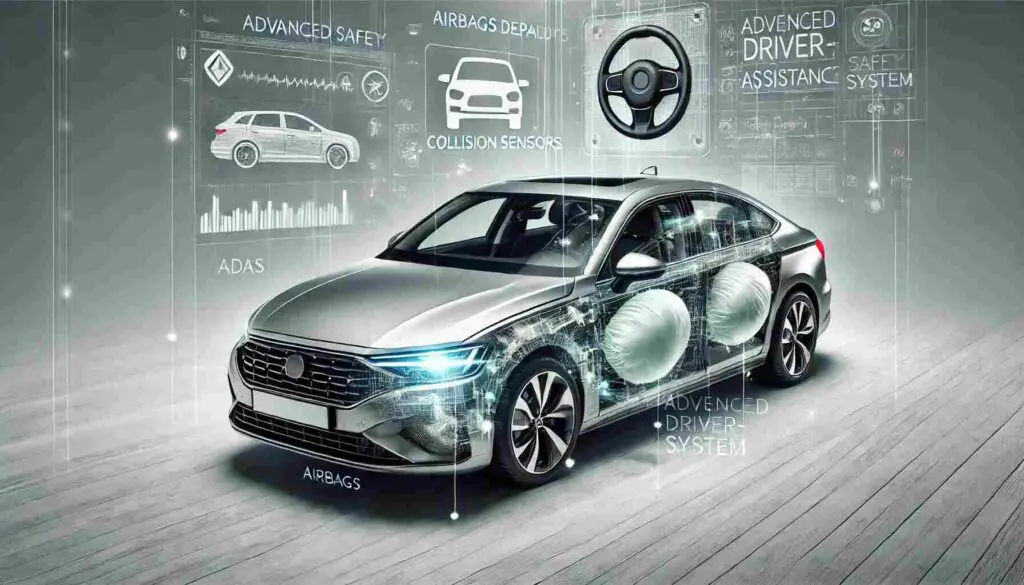In the realm of automotive safety, occupant sensing systems stand as crucial guardians, ensuring the well-being of vehicle occupants. These systems have evolved significantly, integrating advanced technologies to enhance accuracy, reliability, and user experience. In this comprehensive guide, we delve into the depths of automotive occupant sensing systems, deciphering their functionalities, technological underpinnings, applications, challenges, and future prospects.
Understanding the Basics
Automotive Occupant Sensing Systems (OSS) are sophisticated mechanisms designed to detect and classify occupants within a vehicle cabin. These systems employ a combination of sensors and algorithms to discern the presence, position, and characteristics of occupants, including adults, children, and inanimate objects.
Components of an Occupant Sensing System
- Sensor Array: Typically comprising weight-based sensors, ultrasonic sensors, infrared sensors, cameras, and pressure sensors, the sensor array forms the backbone of an OSS.
- Control Unit: Central to OSS operation, the control unit processes sensor data and executes algorithms to determine occupant parameters.
- Display Interface: In modern vehicles, the OSS often interfaces with the vehicle’s infotainment system to provide visual or auditory feedback to occupants.
How Occupant Sensing Systems Work
Utilizing a combination of sensor inputs and computational algorithms, OSS functions through a multi-step process:
- Data Acquisition: Sensors collect data regarding occupant presence, weight, size, and position.
- Data Processing: The control unit analyzes sensor data, employing algorithms to differentiate between various occupant types.
- Decision Making: Based on processed data, the OSS determines appropriate actions, such as airbag deployment, seat belt reminders, or personalized comfort adjustments.
Key Technologies Behind Occupant Sensing Systems
Weight-Based Sensing Systems
Weight-based systems utilize sensors embedded within the vehicle seat to measure the weight exerted on the seat surface. By comparing weight distributions against predefined thresholds, these systems discern occupant presence and estimate occupant characteristics.
Ultrasonic Sensors
Ultrasonic sensors emit high-frequency sound waves within the vehicle cabin. By analyzing the time taken for sound waves to reflect off occupants and return to the sensor, ultrasonic systems estimate occupant positions and movements.
Infrared Sensors
Infrared sensors detect heat signatures within the vehicle cabin. By interpreting heat patterns, these sensors identify the presence and location of occupants, particularly useful in low-light conditions.
Camera-Based Systems
Camera-based systems employ vision recognition algorithms to analyze images captured within the vehicle cabin. By identifying human features and characteristics, such as facial contours and body posture, these systems distinguish between occupants and objects.
Pressure Sensors
Pressure sensors integrated into vehicle seats measure pressure exerted by occupants. By correlating pressure distributions with occupant profiles, these sensors contribute to accurate occupant classification.
Advanced Applications
Airbag Deployment Systems
Occupant sensing systems play a pivotal role in airbag deployment strategies, ensuring timely and appropriate deployment based on occupant characteristics and crash severity.
Child Seat Detection
By recognizing child seat installations, OSS can adjust airbag deployment settings to mitigate injury risks to child occupants.
Seat Belt Reminder Systems
OSS enhances seat belt reminder functionalities by detecting occupant seating positions and prompting seat belt engagement when necessary.
Personalized Comfort Settings
Modern vehicles utilize OSS data to tailor comfort settings, such as seat adjustments and climate control, to individual occupant preferences.
The Role of AI and Machine Learning
Enhancing Accuracy and Reliability
Integration of AI and machine learning algorithms empowers OSS to adapt and improve accuracy over time, refining occupant classification and decision-making processes.
Predictive Occupant Sensing
By analyzing historical data and contextual factors, predictive occupant sensing anticipates occupant behaviors and preferences, optimizing safety and comfort provisions.
Future Possibilities
Continued advancements in AI and machine learning promise enhanced predictive capabilities, enabling OSS to anticipate and respond to dynamic driving scenarios with unparalleled precision.
Integration with Other Vehicle Systems
Connection with Advanced Driver-Assistance Systems (ADAS)
Integration with ADAS enhances overall vehicle safety by leveraging OSS data to inform collision avoidance and mitigation strategies.
Impact on Vehicle Safety Ratings
OSS functionalities significantly influence vehicle safety ratings, with accurate occupant detection and protection measures contributing to higher safety scores.
Interaction with Vehicle Infotainment Systems
Seamless integration with infotainment systems enables OSS to provide real-time feedback to occupants, fostering awareness and proactive engagement with safety features.
Challenges and Limitations
Privacy Concerns
The proliferation of camera-based OSS raises privacy concerns regarding the collection and use of occupant data, necessitating robust privacy safeguards and transparent data handling practices.
System Malfunctions and False Alarms
Occasional malfunctions or false alarms pose challenges to OSS reliability, underscoring the importance of continuous system monitoring and diagnostic capabilities.
Limitations in Current Technology
Despite advancements, current OSS technologies exhibit limitations in accurately detecting certain occupant types, such as occupants wearing bulky clothing or accessories.
Regulatory and Safety Standards
Global Safety Standards for Occupant Sensing
Regulatory bodies enforce stringent safety standards governing the design, implementation, and performance of automotive occupant sensing systems to ensure compliance with global safety regulations.
Impact of Regulations on Design and Implementation
Regulatory mandates influence OSS design and implementation strategies, driving innovation and standardization across the automotive industry.
Future Regulatory Trends
Anticipated regulatory trends emphasize the integration of emerging technologies, such as AI and machine learning, to enhance occupant safety and regulatory compliance.
Future Trends and Developments
Predictive Analytics for Enhanced Safety
The integration of predictive analytics facilitates proactive safety measures, enabling OSS to preemptively address potential safety hazards and mitigate risks.
Integration with Autonomous Vehicle Technologies
As autonomous vehicle technologies evolve, OSS will play a pivotal role in ensuring occupant safety and comfort within self-driving vehicles.
Smart Materials and Sensor Evolution
Advancements in smart materials and sensor technologies promise to revolutionize OSS, offering enhanced sensitivity, durability, and adaptability to diverse vehicle environments.
Case Studies
Success Stories in Automotive Safety Enhancements
Numerous case studies highlight the efficacy of OSS in preventing injuries and saving lives during vehicle collisions, underscoring their indispensable role in automotive safety.
Real-World Impact of Occupant Sensing Technologies
Real-world data corroborates the tangible benefits of OSS implementation, demonstrating reductions in injury severity and fatalities across diverse driving scenarios.
Consumer Insights
Consumer Trust and Acceptance
Consumer surveys and market analyses reveal growing confidence and acceptance of OSS technologies, driven by their demonstrated efficacy in enhancing vehicle safety.
Impact on Insurance and Liability
The adoption of OSS contributes to reduced insurance premiums and liability risks for vehicle manufacturers and insurers, reflecting their positive impact on overall road safety.
User Experience and Feedback
User feedback and usability studies inform iterative improvements to OSS interfaces and functionalities, ensuring intuitive and user-friendly interactions for vehicle occupants.
Conclusion
In conclusion, automotive occupant sensing systems represent a pinnacle of technological innovation, reshaping the landscape of vehicle safety and user experience. As these systems continue to evolve and integrate with emerging technologies, the future holds boundless possibilities for enhancing occupant safety, comfort, and well-being on the roads.
Additional Resources
Further Reading
- National Highway Traffic Safety Administration (NHTSA)
- Insurance Institute for Highway Safety (IIHS)
- Society of Automotive Engineers (SAE)
Industry Reports
Relevant Conferences and Workshops
This comprehensive guide offers a roadmap for navigating the intricate domain of automotive occupant sensing systems, empowering stakeholders with insights to drive innovation, enhance safety, and shape the future of mobility.









